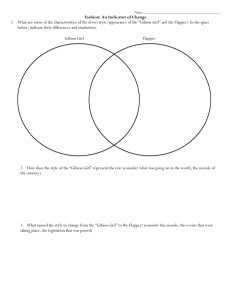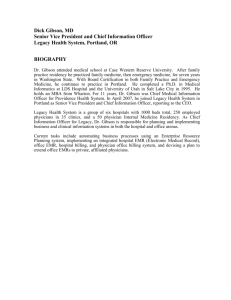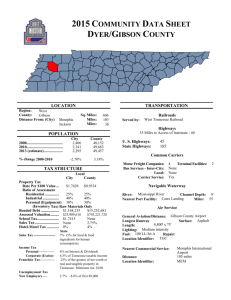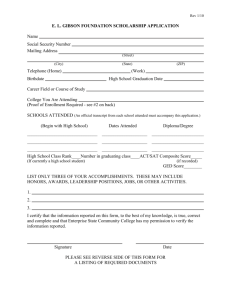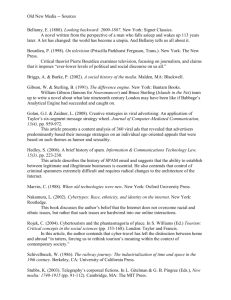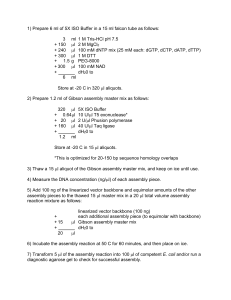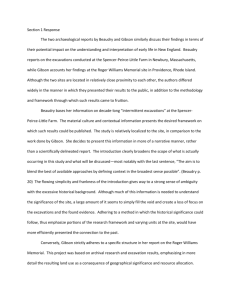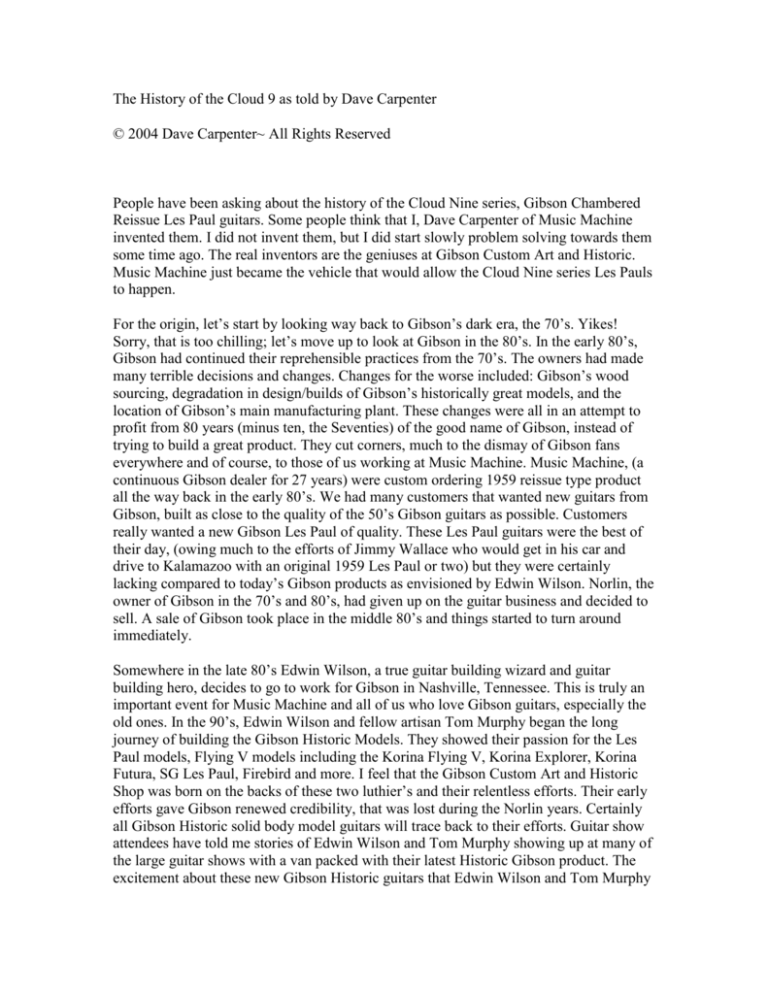
The History of the Cloud 9 as told by Dave Carpenter
© 2004 Dave Carpenter~ All Rights Reserved
People have been asking about the history of the Cloud Nine series, Gibson Chambered
Reissue Les Paul guitars. Some people think that I, Dave Carpenter of Music Machine
invented them. I did not invent them, but I did start slowly problem solving towards them
some time ago. The real inventors are the geniuses at Gibson Custom Art and Historic.
Music Machine just became the vehicle that would allow the Cloud Nine series Les Pauls
to happen.
For the origin, let’s start by looking way back to Gibson’s dark era, the 70’s. Yikes!
Sorry, that is too chilling; let’s move up to look at Gibson in the 80’s. In the early 80’s,
Gibson had continued their reprehensible practices from the 70’s. The owners had made
many terrible decisions and changes. Changes for the worse included: Gibson’s wood
sourcing, degradation in design/builds of Gibson’s historically great models, and the
location of Gibson’s main manufacturing plant. These changes were all in an attempt to
profit from 80 years (minus ten, the Seventies) of the good name of Gibson, instead of
trying to build a great product. They cut corners, much to the dismay of Gibson fans
everywhere and of course, to those of us working at Music Machine. Music Machine, (a
continuous Gibson dealer for 27 years) were custom ordering 1959 reissue type product
all the way back in the early 80’s. We had many customers that wanted new guitars from
Gibson, built as close to the quality of the 50’s Gibson guitars as possible. Customers
really wanted a new Gibson Les Paul of quality. These Les Paul guitars were the best of
their day, (owing much to the efforts of Jimmy Wallace who would get in his car and
drive to Kalamazoo with an original 1959 Les Paul or two) but they were certainly
lacking compared to today’s Gibson products as envisioned by Edwin Wilson. Norlin, the
owner of Gibson in the 70’s and 80’s, had given up on the guitar business and decided to
sell. A sale of Gibson took place in the middle 80’s and things started to turn around
immediately.
Somewhere in the late 80’s Edwin Wilson, a true guitar building wizard and guitar
building hero, decides to go to work for Gibson in Nashville, Tennessee. This is truly an
important event for Music Machine and all of us who love Gibson guitars, especially the
old ones. In the 90’s, Edwin Wilson and fellow artisan Tom Murphy began the long
journey of building the Gibson Historic Models. They showed their passion for the Les
Paul models, Flying V models including the Korina Flying V, Korina Explorer, Korina
Futura, SG Les Paul, Firebird and more. I feel that the Gibson Custom Art and Historic
Shop was born on the backs of these two luthier’s and their relentless efforts. Their early
efforts gave Gibson renewed credibility, that was lost during the Norlin years. Certainly
all Gibson Historic solid body model guitars will trace back to their efforts. Guitar show
attendees have told me stories of Edwin Wilson and Tom Murphy showing up at many of
the large guitar shows with a van packed with their latest Historic Gibson product. The
excitement about these new Gibson Historic guitars that Edwin Wilson and Tom Murphy
were building was at times overwhelming. At the Japanese guitar shows, Tom Murphy
and Edwin Wilson were sometimes cheered and treated somewhat like Rock Stars for
their attempts to bring the glory back to Gibson.
On the west coast there was a small guitar company building some of the best custom
guitars for many of the top Los Angeles session players and many superstar guitarist of
the day. The company’s name was Valley Arts. Owned by Mike McGuire and Al
Carness, it was a hot spot for guys like Steve Lukather and Larry Carlton, to name a few.
Unfortunately for them, (but as you will see, fortunate for us Gibson fans) the Valley Arts
manufacturing plant burned beyond their insurance policies coverage. Valley Arts could
not be put back together in the same way again. Through a few twists and turns, both
Mike McGuires’ and Al Carness’ journeys led them to work at Gibson and take over
important roles. Mike McGuire becomes the plant manager at Gibson Custom Art and
Historic. On a side note, if you have wondered who does the incredible finishing work at
the Custom Shop, Mike McGuire brought his son Mickey McGuire with him to Gibson.
He is the artist in the finishing booth.
What eventually becomes Gibson Custom Art and Historic, transitions from humble
beginnings, a couple of Costco tables in the corner of shipping and receiving manned
only by Edwin Wilson and Tom Murphy, through some variations and into their own
building with Mike McGuire as plant manager about eleven years ago. Edwin Wilson,
true to his passions, has the title Historic program director. The new Gibson Historic
Reissue guitars from Custom Art and Historic, (when other Gibson divisions use the
moniker reissue, it is not the same) are built in Edwin Wilson’s vision. Whenever I have
seen Edwin Wilson at the factory he is always busy building guitars. Edwin spends about
two weeks of every month acquiring the finest tone woods for the entire Gibson Custom
Art and Historic division. Mike McGuire wears many hats also and when I have visited
him at the factory, I have seen him working on guitars for some of our cultures guitar
heroes. Both of these talented luthiers are hands on type people. They lead through
example. Though they are directors and plant managers etc., they get saw dust on
themselves everyday. They are true seekers of excellence and problem solvers.
Enter Rick Gembar to Gibson Custom Art and Historic. Rick Gembar is the head of the
division. A very smart analytical person, I always see him reading when he is not
engaged. He has always been very nice to me, but I am told he is a real bulldog type
person, relentless in his pursuit of excellence and a guy that just gets it done. I believe
Rick Gembar knows and understands the extreme talents and passion of the people that
he leads at Custom Art and Historic. He knows how to keep them motivated. He has
found out exactly what Edwin Wilson and Mike McGuire need, how important each need
was, built a comprehensive chart or system and went to Gibson corporate offices and
convinced the decision makers to invest heavily. From my observations, he has
successfully and in an orderly manner realized these visions and dreams. By 2003 only
ten years of Gibson Custom Art and Historic in its own building, Edwin and Mike now
have everything to build what many people think is maybe the best Gibson guitars ever
built. The Gibson Custom Shop buys and sources their own woods; they build their own
necks, bodies, fingerboards etc. They have their own machines, so Mike and Edwin can
control the smallest of details.
An example of Rick Gembar’s importance is the 2003 potentiometers for Historic Les
Paul guitars. The manufacture for the potentiometers needed half a million dollars from
Gibson to retool to make the proper potentiometer that Edwin envisioned for his Gibson
Historic Les Pauls. In 2002 Rick Gembar, went and got the approval to spend half a
million dollars just to retool this outside manufacture’s factory, to make a part the
consumer never even looks at for the 2003 product. The half a million dollars was just to
retool, they still had to buy each potentiometer. The previous potentiometer used, had
been working to turn down the volume, in the Historic Les Paul and it adjusted the tone
in the Historic Les Paul, however it just wasn’t close enough to the original for Edwin
Wilson. Rick Gembar believed in Edwin’s vision and made it happen. Another example,
in 2002 Rick Gembar got Gibson corporate to see the advantage in spending almost four
hundred thousand to retool the capacitor manufactures facility to make the proper
capacitor for the Historic Les Paul. Another part the consumer can’t see, 99% don’t even
know that it was a need, but Rick Gembar believed in Edwin and made it happen. I bring
up these to examples, because most large capital investments go towards exciting the
consumer visually. These examples, and there are more, show me the level of
understanding that Rick Gembar has, and how his stewardship of Custom Art and
Historic is so important.
Rick has been able to keep these extremely talented individuals for all of these years at
Gibson, a major accomplishment in my book. I can only imagine their value at Gibson’s
competitors. I believe he leads as other great leaders lead, by making it about Edwin and
Mike and not about him. I have read to many times how department managers, division
leaders and company leaders send many of their companies down the river by looking to
make their short term profits look good and not investing in the future. Rick Gembar
appears to be looking out for his division and Gibson the company for the long term.
Once Music Machine was finally and properly introduced to the leaders at the new
Gibson Custom Shop, Music Machine started taking advantage of their talents.
Consumers emailed Music Machine and said things like, “I love what the Gibson Custom
Shop is doing but I would like this finish instead” or , “I love what the Gibson Custom
Shop is doing but I would like this neck size instead” Music Machine didn’t throw these
ideas away. At Music Machine we cataloged these requests and organized them into
possible custom runs. Passionate Gibson players, such as Jon Schwartz and Chuck Shenk
to name a few, were dreaming themselves of what could be and had a knowledge of the
pulse of the country as it pertains to what consumers wanted from Gibson and freely gave
this input to the Music Machine. This input was never discarded, because with the new
leadership at Gibson and especially at Gibson Custom Art and Historic division level,
Music Machine knew these things were all possible. In late 2002 and by 2003 Music
Machine had undertaken the distilling of all of this great input. The results of which, lead
to the Stinger series of guitars. The Stinger series so named, in part to honor Jon
Schwartz for his benevolent giving of ideas, (Jon had custom ordered some great Gibson
custom guitars previously with a Stinger on the back of the peg head) and because many
of Dave Carpenter’s guitars had a factory Stinger on the back of the peg head, including
his favorite original 1959 Gibson Les Paul and his Gibson 1936 Super 400. The Stinger
series of Gibson guitars was the largest custom run of guitars ever by an independent
dealer at the Gibson Custom Shop. Music Machine proved its worth to Gibson by being
able to conceive the Stinger series run, market the Stinger series run and maybe most
important pay for the Stinger series run of guitars. The national advertising in magazines
for the Stinger series of Gibson guitars was applauded by Gibson. The brochure for the
Stinger series of Gibson guitars was applauded by Gibson. Music Machine’s efforts at
guitar shows for the Stinger series of Gibson guitars was applauded by Gibson and
supported. The success with the Stinger series along with Music Machine’s other efforts,
is what probably led to Music Machine receiving Gibson’s prestigious, “Dealer of the
Year” award and “Rabble Rouser of the Year” award in January of 2004.
If you are still with me through this bit of important Gibson and Music Machine history,
hopefully you are starting to see a team that listens, then dreams of how a product can be
and does what is needed to make it happen. The team is Gibson, Music Machine and the
consumer. Right down to the last detail, things you can’t easily see, this team does it and
does it right.
O.K, so how does the Cloud Nine series, Gibson Chambered Reissue Les Paul and all of
this history relate? One, Edwin Wilson persevered to build the best guitars first, but
equally important the most accurate reproductions possible of the greatest guitars ever
built during the first golden era of the electric guitar. Two, Mike McGuire had a long
history of building custom guitars for session players, rock stars and consumers alike and
understands how to get more tone. Three, Rick Gembar had the ability to work
constructively with Gibson corporate. Four, Music Machine has a history of pursuing
excellence and desires to take advantage of all of the Gibson Custom Shop’s talents and
abilities. Music Machine wanted Edwin’s detailed Historic product, changed only with
one of Mike McGuire’s proprietary internal tone chambering designs, (which had been
married before for certain guitar gods) and Music Machine obviously needed Rick
Gembar to see the vision and negotiate through the Gibson corporate structure to allow
each model that the Music Machine desired. Five, Music Machine had proven its worth
as a partner that could live up to its obligations even in a huge endeavor.
Of course it took a long time to make the Cloud Nine series happen. An initial problem
was the fact that the Music Machine wanted all of the Historic Les Paul details right
down to what you can’t see and what you can see including the wood selection. A
concern, how would you know, from outward appearances that it was, say a Chambered
Reissue 1959 Les Paul verses a Historic Reissue1959 Les Paul? I came up with and
proposed serial number scheme and a promising advertising program.
Music Machine has commissioned the largest limited and/or custom runs of special
guitars with the Gibson Custom Art and Historic division in the past. I felt that this run of
Cloud Nine series Chambered Reissue Les Paul guitars would have massive interest. So,
I asked a couple of other dealers, that I knew well, trusted and respected, if they would
share in the responsibility, of further flushing out the details and the cost to market this
undertaking. The other Custom Art and Historic dealers; Dave’s Guitar Shop from
Lacrosse WI and Wildwood Guitar’s from Louisville Colorado along with Music
Machine all added value and insight to refine all aspects of the Cloud Nine series. In
early 2004 Dave Rogers ( Dave’s Guitar Shop ), Steve Mesple ( Wildwood Guitars ) and
Dave Carpenter ( Music Machine ) all arrived in Nashville for three days of talks about
the Cloud Nine Chambered Reissues. The prototype 1959 Chambered Reissue blew us
away. It is said that the Cloud Nine is a state of mind, we agreed. The excitement after
playing the prototype brought the three dealers closer together as they realized the
potential and the honor they would have to bring this concept to the market. Gibson
would build the Chambered Reissue guitars to specifications but it would be up to the
three dealers to handle all responsibilities for promotion and marketing.
This may well be a first, three competitors in the guitar business working together to
promote a great product whose time had come. The Gibson Custom Art and Historic
division has had programs before where only a few select dealers were honored to have
specific, desirable products. An example was their Custom Shop’s Emerald Dealer
program, which featured only five of us, having exclusivity to the Historic 1959 Les Paul
Reissue guitars in 2002. In all previous programs Gibson promoted and marketed the
products. I believe the three dealers involved in the Cloud Nine series Chambered
Reissue program, have marketed, represented properly, added value and tell the Gibson
story as pertains to the Cloud Nine series of Les Paul Reissues with integrity. I have been
very pleased working with the other dealers. What a concept, the guitar builder builds
great guitars and concentrate on building them, the guitar dealer loves to sell the builders
high quality product. The builder builds and the guitar dealer do the selling. Each
concentrates on what they do the best. Possible future formula?
The Cloud Nine series is a Les Paul for those who love a Les Paul whether original or a
reissue, but also want more or maybe less and possibly both. You see, Music Machine
has long believed in the tone chambering for the” more tone” that it imparts. Previous to
the new Chambered Reissue Cloud Nines, Music Machine has probably brought in from
the Gibson Custom Shop better than fifty custom guitars that were not on the Gibson
Custom Shop price list. Music Machine is already somewhat famous for things like
Chambered Les Paul Customs, Chambered Les Paul Customs with mini hum buckers,
Chambered 1968 Les Paul Customs, Chambered Les Paul Customs with fancy wood
tops(quilt, flame etc), Chambered Les Paul Standards and more. As we went through
various incarnations we noticed and became accustomed to, “The More” in these
Chambered designs. “The Less” in a Chambered Les Paul was instantly recognizable.
The feather weight added a certain degree of comfort. The extra vibrations gave a great
feel aspect. Music Machine had customers who would buy a Chambered Les Paul for,
“The More”, we had customers who would buy a Chambered Les Paul for, “The Less”
and customers who would buy a chambered Les Paul for, “The More” and “The Less”!
Many customers that had purchased a Chambered Les Paul wanted a Chambered Les
Paul Reissue. Music Machine being market driven pursued the requests.
Since Dave Rogers and Steve Mesple are both gifted guitarist, both have great taste in
instruments, both tended to have similar guitars in their personal collections as what I
have in mine, but neither had the depth of experience that I had with Chambered Les Paul
designs, so I was interested in their reaction to the prototype Chambered Reissue Les
Paul. Their reaction was similar to mine. Both Steve and Dave loved the tone and the
feel. The feel is something I don’t hear talked about that much. Most people talk about
the tone and the weight. But I agree with Steve and Dave that the extra vibration inherent
in the design adds to a great feel. The tone with its extra push, the extra feel and the
feather weight with its extra comfort factor, lead me to believe the future is bright. The
Gibson Cloud Nine Les Paul guitars are fabulous!
So that is how I believe the Cloud Nine series Chambered Les Paul Reissues came to be.
Neither Dave Carpenter nor the Music Machine either invented or thought up on its own.
Music Machine stands here on the shoulders of the giants and genius of the Gibson
Custom Art and Historic Shop. Music Machine is dependant on its customer base for the
direction of its efforts toward these cool and great custom runs it invests in. It is a
partnership that Music Machine enjoys and with this particular custom run of Gibson Les
Pauls, Music Machine has enjoyed the partnership of two other dealers. I personally hope
that this is a continuing to many great new product concepts that the Music Machine can
invest in and play a part in bringing the guitar players of the world their future tools and
art supplies.
For those of you who are already enjoying the Cloud Nine series, Thank You. For those
interested call any of the three dealers and find out what the Cloud Nine series of
Chambered Reissue Les Paul guitars is all about.
Music Machine 800-343-9795
Dave’s Guitar Shop
Wildwood Guitars
One note about this article, I did this completely from memory. I did not interview
anyone. I did not confirm any of my theories. I did this from my thirty years of being in
the guitar business, twenty seven years of being a Gibson guitar dealer and a lifetime of
talking passionately to anyone and everyone who wants to talk about guitars and
especially my favorite brand, Gibson guitars. These are my suppositions, opinions,
theories and versions of events, which I will gladly correct as anyone brings any new or
different light to any part of this article. I tend to look at things through the emotion of
the time. I wrote this simply because some people had the wrong idea and was giving me
more credit than I deserved. Please feel free to email.
© 2004 Dave Carpenter~ All Rights Reserved

